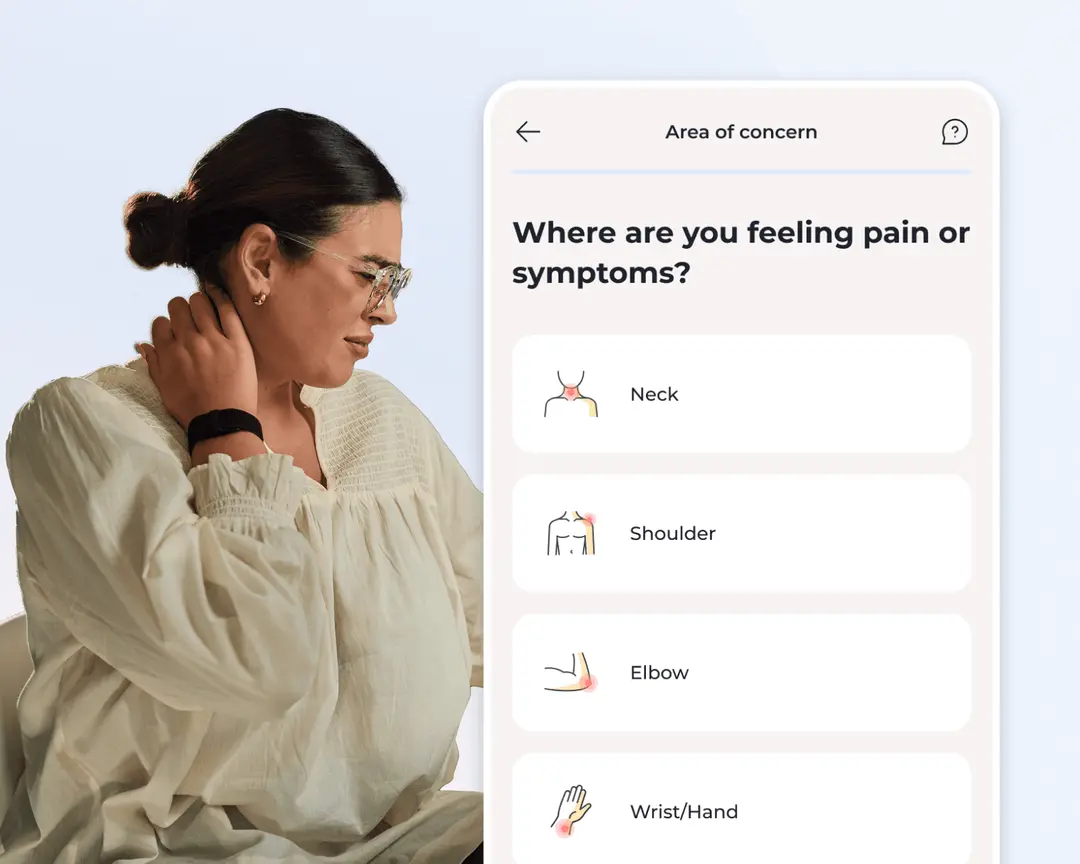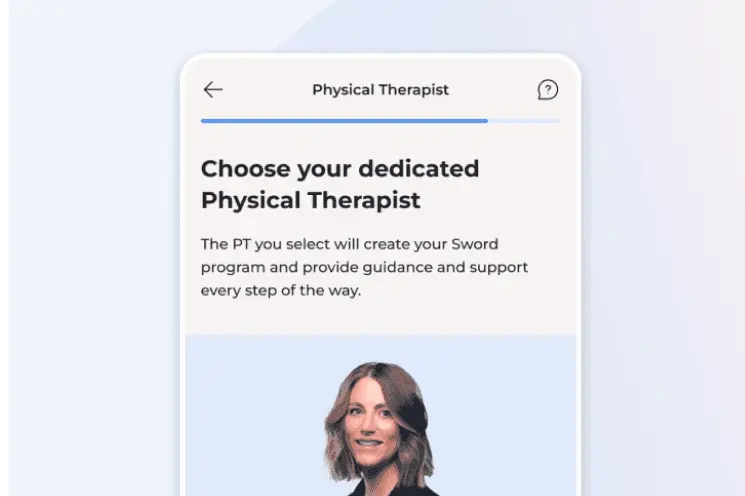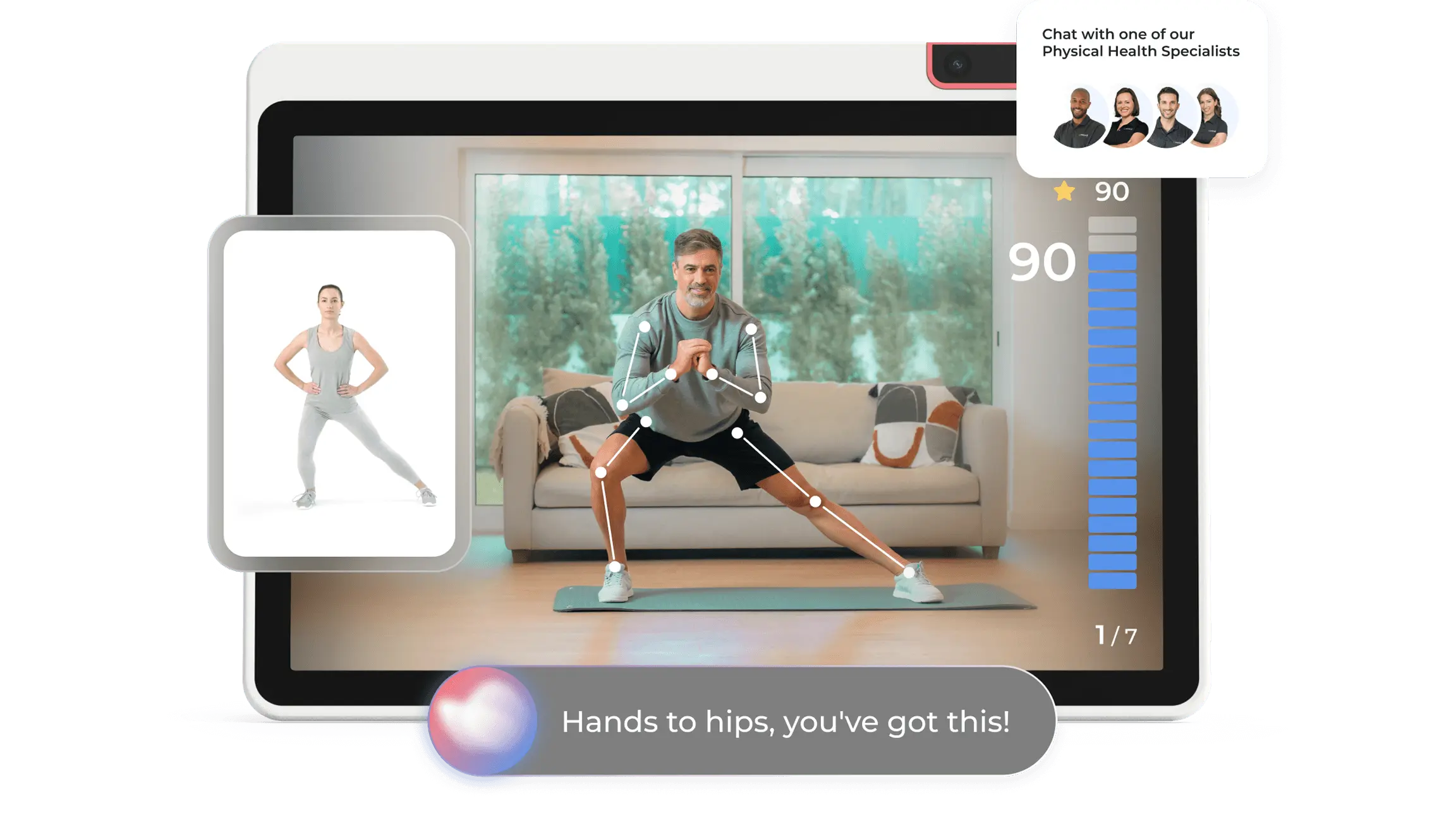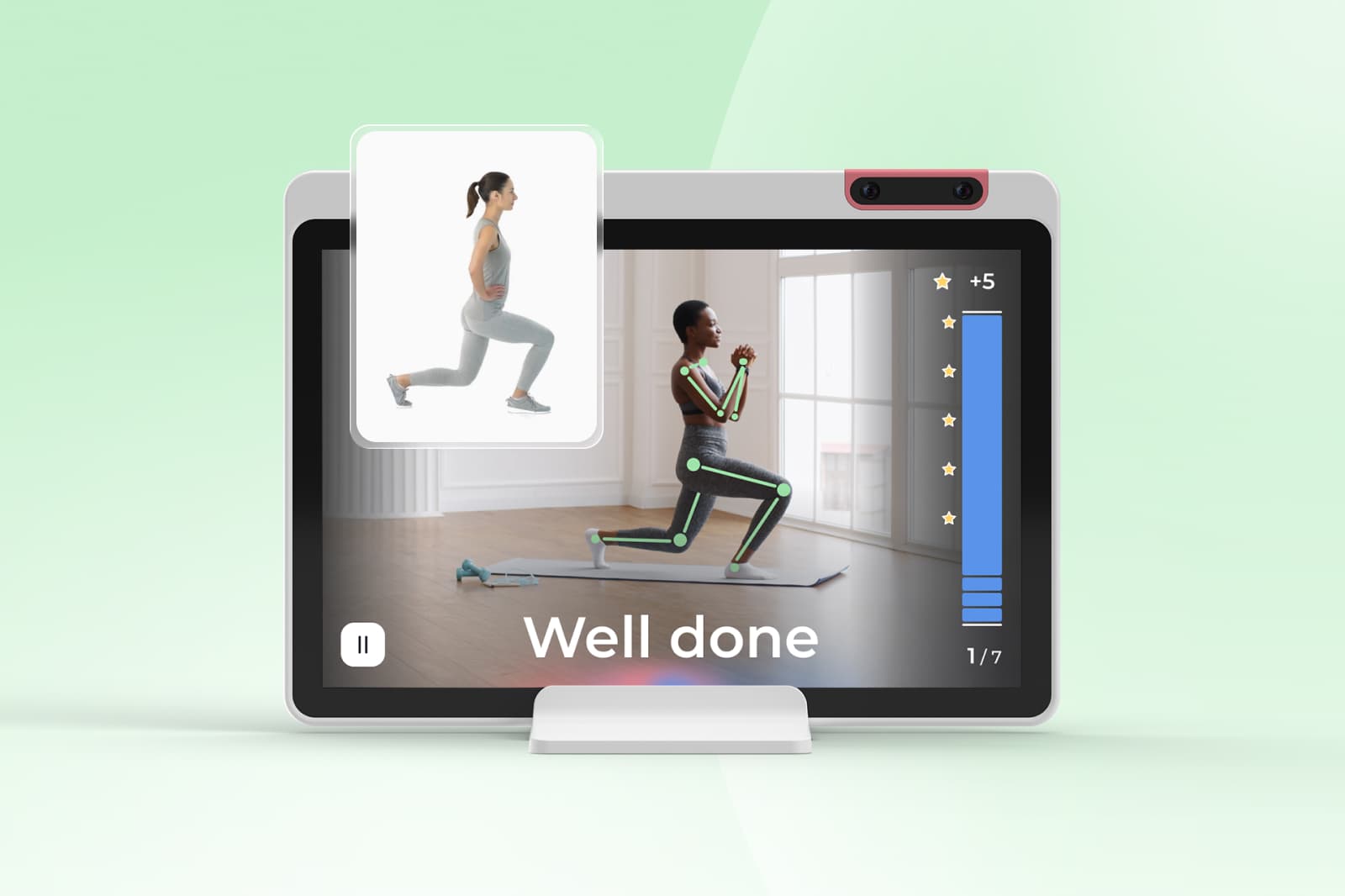January 16, 2023 • min read
5 stretches to help relieve a frozen shoulder
Do you have a frozen shoulder? Try these stretches to ease stiffness and reduce pain.
Written by

Evidence-based healthcare insights
Stiff shoulders, restricted shoulder movement, or a sensation of a frozen shoulder can be painful, uncomfortable, and restrictive. If left untreated, chronic pain can develop.
Finding relief from pain is critical, but almost always some form of movement is required to start working on recovery. For those who deal with shoulder pain, or any other musculoskeletal (MSK) pain, there can be a fear of movement or a tendency to avoid expected pain.
Sometimes we need to embrace "low pain" and start the shoulder moving again, and the following shoulder stretches can help you recover.
What is a frozen shoulder?
Frozen shoulder (adhesive capsulitis) can make even the smallest movements painful, from reaching overhead to putting on a jacket. The characteristics of a freezing or frozen shoulder typically start with pain and a gradual onset of stiffness in the joint. Those with diabetes, those whose shoulder has been immobilized for a period, and women are at higher risk for developing frozen shoulders. Frozen shoulder stretches are a great way to help reduce pain and increase mobility.

Try these five low-impact stretches for relief.
1. The wall shoulder stretch
You can perform this stretch once per day for two weeks, then twice per day for another two weeks, then three times per day for another two weeks, or until you’re able to stretch without feeling pain or discomfort (or at least without worrying about it).
How to do it:
Stand or sit with your back against a wall, and slowly move your arm away from the wall until you feel tension in your shoulder. Hold this position for 10 seconds, then rest back down to the start position again before repeating once more on each side.
2. Pendulum shoulder stretch
How to do it:
Sit in a comfortable position, with your back straight and your legs on the floor. Hold a towel or strap in each hand, keeping them at chest level with elbows bent 90 degrees. Lean forward while keeping your head back and spine straight (you'll feel the stretch along the side of your torso). Hold this position for 20 to 30 seconds before returning to the starting position and repeating on the opposite side of the body until you've completed five reps total for each side of the body (10 total).
3. Cross chest stretch
The cross chest stretch is a good way to loosen up the muscles in your neck and upper back. If you have a rotator cuff injury and cannot rotate your shoulders fully without pain, do not perform this stretch until you've consulted with a doctor or physical therapist.
How to do it:
Cross one arm across your chest, making sure that it is not too low on your ribs. Do not lift either shoulder or turn your head to look up at the sky; this will put too much strain on the joint and can cause discomfort or pain. Hold this position for 30 seconds, then repeat with the other side. Repeat this three times per side for best results.
3. Pectoral stretch
How to do it:
Place a towel around your shoulder and grab the ends of the towel with both hands. Pull until you feel a stretch in your chest. Hold this position for 30 seconds or until it becomes uncomfortable to hold any longer, then repeat 3 times on each side.
4. Sleeper shoulder stretch
Minimally invasive stretches make a bigger difference than we realize. Many are so simple, they can be done in your sleep! (Not particularly—but close).
How to do it:
Place a pillow or two under your arm. Lie on your back and raise your arm above your head, keeping it straight. Hold for 30 seconds, then repeat three times.
5. Biceps gleno-humeral stretch
The Biceps Gleno-humeral Stretch is a very effective way to help relieve pain and restore mobility in patients suffering from frozen shoulder syndrome. It can be done anywhere and does not require any equipment other than two arms (and maybe someone else around for moral support).
How to do it:
To stretch your biceps, bring your arm across your body toward the opposite shoulder. Make sure to keep your elbow straight and pointed downward. For example, if you’re stretching the right arm, cross it over toward the left side of your body without bending or rotating it. You may feel some tension at first; this is normal! As soon as you feel that tension release (after about 10 seconds), move on to another stretch.
Try more exercises and advice to relieve your pain
Check out these Sword-recommended exercises for more general pain relief advice:
- Should I Avoid Doing Things that Hurt?
- 7 Ways to Ease Joint Pain at Night
- Make Working from Home Less of a Pain
When should you stop moving during these shoulder stretches?
Often, these exercises test our limits—so it’s probably okay if you experience a touch of discomfort. Feel free to back off if it becomes too much. There is no need to push through and aggravate your joints. Understanding your limits will help you establish your comfortable range.
The frozen shoulder is a common condition that can be treated with stretches and exercises. The five exercises listed above are some of the best for working on flexibility in your shoulder and arm. Give them a go, and remember: consistency is the key to best results.
Sword Thrive gives you expert digital physical therapy from the comfort of home
Rather than relying on stretches alone, Thrive gives you immediate access to guided care that combines expert oversight with real-time feedback. Thrive is a digital physical therapy program that gives you access to a personalized care plan designed to help you recover from joint and muscle pain.
End shoulder pain with Sword Thrive
Recover faster from shoulder pain from the comfort of home with Thrive's clinically-proven digital PT plans.

1. Tell us about you
Share where you’re feeling pain, your medical history, and your lifestyle so we can tailor your care from the start.

2. Choose your clinician
Pick your dedicated Doctor of Physical Therapy. They will guide your recovery and adjust your plan as you progress.

3. Receive your FDA-listed Thrive kit
We send your Thrive Pad (or motion sensors for certain conditions), equipped with AI motion tracking for real-time feedback

4. Recover from home at any time
Follow guided sessions at home with real-time feedback, and support from your matched Doctor of Physical Therapy.
How Thrive helps with frozen shoulder
- Fast access to care: Begin therapy without waiting weeks for a referral.
- Guided recovery for stiffness and pain: Thrive targets frozen shoulder with stretches and strengthening exercises that restore range of motion.
- Stops chronic progression: Early treatment helps prevent frozen shoulder from worsening or lasting for years.
- Confidence to move again: With expert monitoring and ongoing plan adjustments, you can return to daily activities without fear of reinjury.

One Thrive member shared:
“I battled a shoulder injury for years and even had surgery in 2017 but I was still in pain. With Sword, I am pain free with a full range of movement that I didn’t have before!” – Donnie, Sword Thrive member
Musculoskeletal conditions are the leading cause of disability and cost in the U.S.1 and shoulder pain is one of the most common contributors to phyical inactivity.Without treatment, frozen shoulder can linger for months or even years, severely impacting your quality of life. Thrive ensures you get care when it matters most, helping you restore movement and avoid long-term pain. Over 500,000 people use Sword to end their pain, and the clinically-proven results demonstrate the effectiveness of treatment:
- 67% of members are pain free by program end2
- Up to 70% reduction in surgery intent3
- 47% stop taking painkillers4
- 68% increase in productivity5
With Thrive, you are not just stretching your shoulder. You are actively treating the root cause of the problem with expert-led care.
500,000+ people trust Sword to end their pain
Find out if you are already covered for Sword’s at-home care plans by your employer, health insurer, or union.